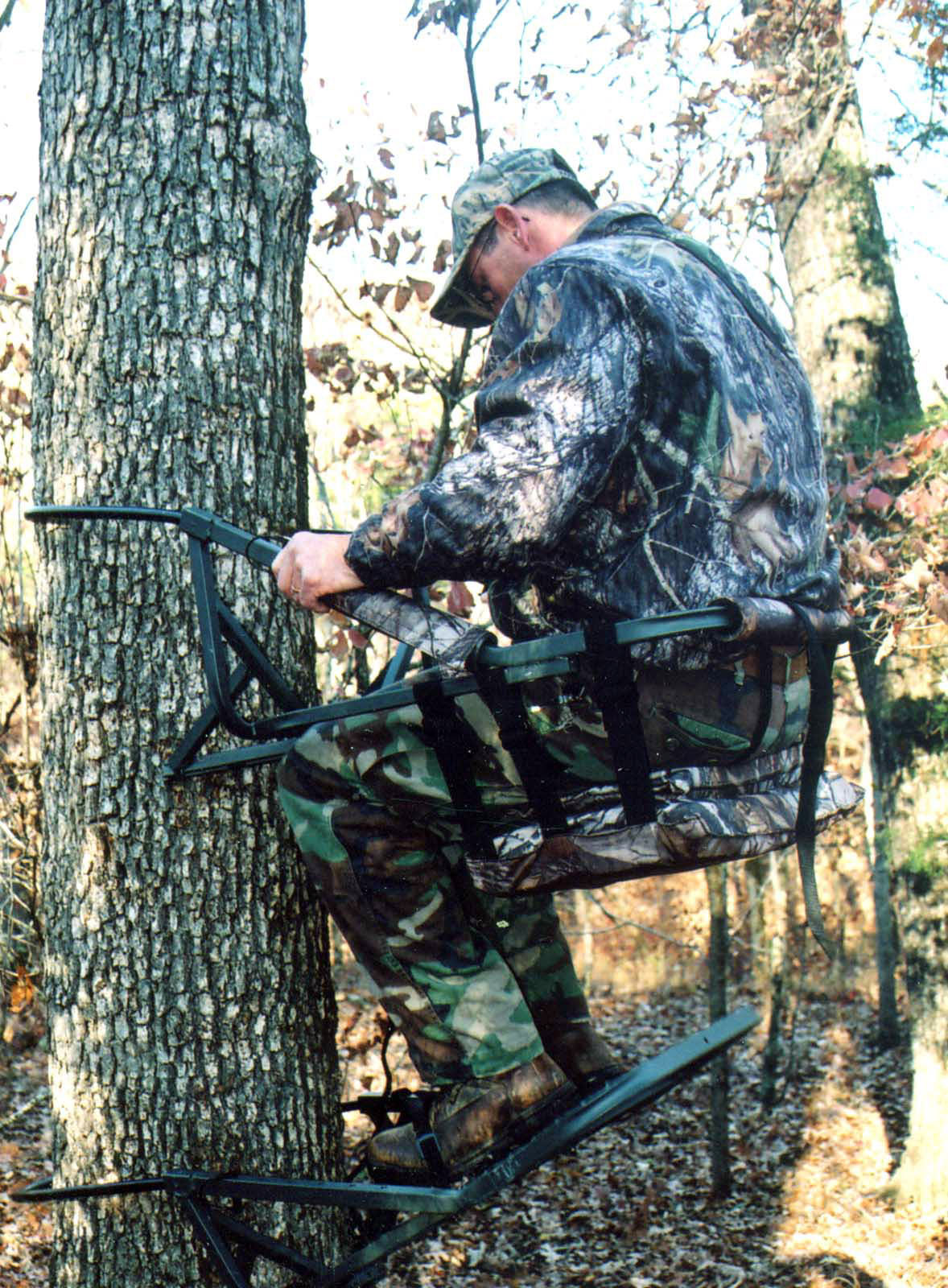The death of an area deer hunter two weeks ago when his tree stand broke rekindled attention to the danger in the sport.
Wildlife agencies say one in three hunting injuries nationwide involve tree stands.
One person who knows the danger well is Guerry Morgan of Harrison. He fell 45 feet out of a stand on Nov. 6, 2004, breaking his back in three places as well as his sternum.
He was on a steep ridge and rolled, when he landed, 20 or 25 feet from the base of the tree he was in, which he thinks probably saved his life. As it was, the accident took away his livelihood as an iron worker.
"I was in the hospital 21 days and had two operations then, and I've had a couple more surgeries since," Morgan said Wednesday. "They fused my spine from T3 to T10 [vertebrae].
"It was a freak accident, but it was basically my fault. It was my carelessness in not wearing a harness."
He and two friends were hunting for the first time on a leased property on Dayton Mountain. They had scouted it the day before, and Morgan had picked out the big poplar where he wanted to put his stand. On the morning of the hunt, though, he rushed out of his house without his stand harness.
"I had hunted without a harness before, though, so I didn't worry about it," he recalled. "Being an iron worker, I was used to heights."
The tree was the thickest he had ever used, however, and his lock-off stand barely fit around it. "Walking" the stand up the trunk was slow going, about 2-3 inches at a time, and then when he got the stand where he planned, he realized a dead limb from another tree was in the way, so he raised his stand higher, and then he went up another 10 feet or so to get a view of a clearing.
After several hours in the stand, he heard his buddy approaching on a four-wheeler and started preparing to take a lunch break. Wanting to make his descent faster than his ascent, he unpinned the stand chain, loosened it a little and thought he pinned it back. What he didn't realize was that the chain had reached its limit and merely got caught in the end of the tubing.
When Morgan then settled his weight back in the stand, it flipped him out.
"Learn from me. Always wear your harness," he said. "You need to be tethered off any time you're more than four feet off the ground, going up or down. A lot of people get their stand up before they put their harness on."
Now 57, Morgan began hunting when he was "10 or 11." He first heard of tree stands in the early 1970s and built one then out of wood.
John Sproles, 54, is another Harrison resident who has been hunting since childhood.
"I didn't see a tree stand till I was in my 20s. Now I would say over 90 percent hunt out of stands," Sproles said. "Everybody I know hunts out of a tree stand. And they're a lot safer now, and a lot lighter."
The advantages go beyond a bigger area for the hunter to watch. Deer don't naturally look up much, and the hunter's elevation helps in scent control, Sproles said.
"And it's safer when you're shooting," he noted. "If you miss the deer the bullet goes into the ground instead of richocheting off something or sailing through the woods."
Sprole never has had a stand accident.
"I had one slip and drop about six inches one time," he said. "That was enough. That is not a comfortable feeling."
As he emphasized, "The first rule in a tree stand, unless it's a ladder stand with a rail around it, is always wear a safety harness. If something happens, that harness may be uncomfortable but you're not going to hit the ground.
"They've improved those things greatly over the years," he added. "Some even have lowering devices: If you fall, they catch you and gradually lower you."
Even with so-called permanent stands, Sproles said, hunters must regularly make sure that nothing has rotted or rusted, that welds haven't weakened and that the screws, nails or other fasteners haven't worked loose.
If it seems obvious that stands should not be attached to dead trees or limbs, "you'd be surprised what people do," Sproles said. "And it's best also to stay off pine trees. Hard wood trees are better."

